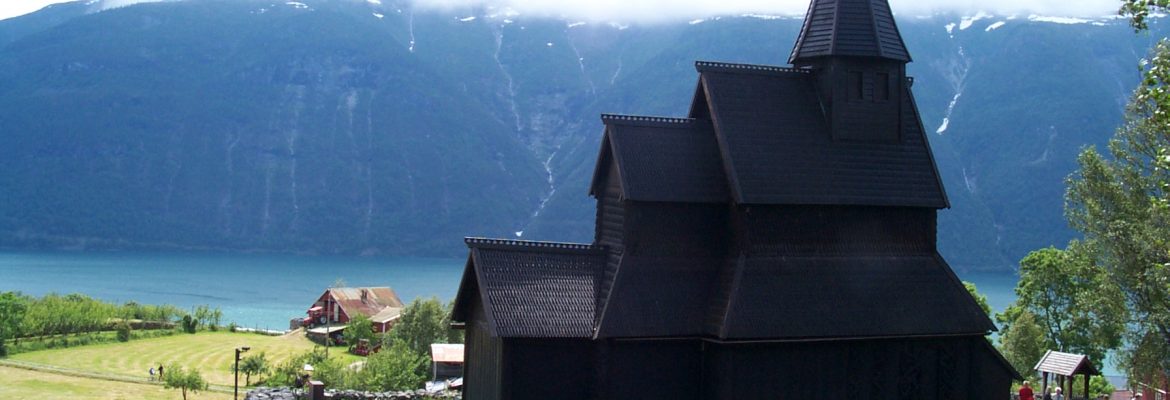Urnes Stave Church, Norway
The stave churches constitute one of the most elaborate types of wood construction which are typical of northern Europe from the Neolithic period to the Middle Ages. Christianity was introduced into Norway during the reign of St Olav (1016-30). The churches were built on the classic basilical plan, but entirely of wood. The roof frames were lined with boards and the roof itself covered with shingles in accordance with construction techniques which were widespread in Scandinavian countries.
Among the roughly 1,300 medieval stave churches indexed, about 30 remain in Norway. Some of them are very large, such as Borgund, Hopperstad or Heddal churches, whereas others, such as Torpo or Underdal, are tiny. Urnes Church was selected to represent this outstanding series of wood buildings for a number of reasons, which make it an exceptional monument: Its antiquity: This church, which was rebuilt towards the mid-12th century, includes some elements originating from a stave church built about one century earlier whose location was revealed by the 1956-57 excavations.
The exemplary nature of its structure: This is characterized by the use of cylindrical columns with cubic capitals and semicircular arches, all of which use wood, the indigenous building material, to express the language of stone Romanesque architecture. The outstanding quality of its sculpted monumental decor: On the outside, this includes strapwork panels and elements of Viking tradition taken from the preceding building (11th century). In the interior is an amazing series of 12th-century figurative capitals that constitute the origin of the Urnes Style production.
Gibraltar – Top of the World Arctic Circle © Monika Newbound


